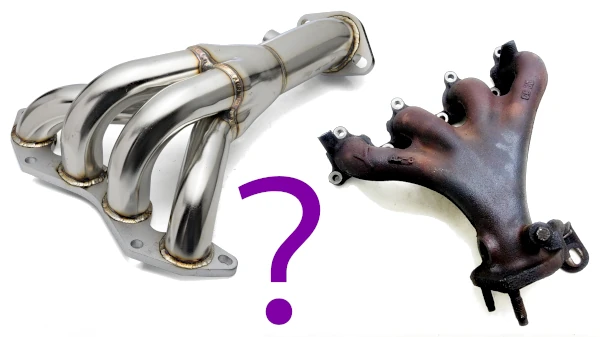Comparing Exhaust Manifolds and Headers: Which Is Right for Your Vehicle?
The efficiency and performance of an internal combustion engine heavily depend on its exhaust system. Two critical components of this system are exhaust manifolds and headers. In this article, we'll compare these two components to help you make an informed decision when upgrading your vehicle's exhaust system.
Exhaust Manifolds: The Basics
Exhaust manifolds are an integral part of the exhaust system, connecting directly to the engine. Their primary role is to collect exhaust gases from each cylinder and channel them into the catalytic converter and the rest of the exhaust system. Typically, exhaust manifolds are constructed from heavy cast iron or stainless steel. These materials are durable and can withstand the high temperatures and harsh conditions of the exhaust system. However, there is a downside to exhaust manifolds. They are more restrictive, creating additional backpressure in the system. This increased backpressure can lead to a decrease in engine power and overall performance.
Headers: The Performance Enhancers
In contrast, headers are a different breed altogether. These are individual pipes that connect directly to each cylinder. Headers are designed to reduce the resistance of exhaust gases, which, in turn, improves engine performance. They are typically made of thinner stainless steel or ceramic coated steel, which is lighter than the materials used for exhaust manifolds. Headers are less restrictive than exhaust manifolds, allowing for better exhaust flow. This reduced resistance can lead to increased engine power, making headers an attractive choice for performance enthusiasts.
Benefits and Drawbacks of Exhaust Headers
- Reduced backpressure for improved engine performance
- Increased engine power and torque
- Improved exhaust flow and efficiency
- Enhanced fuel economy
- Better sound quality
- Reduced weight
- More expensive than exhaust manifolds
- More difficult to install
- May require additional modifications to fit properly
- May increase noise levels
Benefits of Headers
Drawbacks of Headers
Short Headers vs. Long Headers
Headers can be further categorized into two main types: short and long headers. The choice between them depends on your specific goals and vehicle type.
-
Short Headers:
- Easier to install.
- Ideal for turbocharged engines.
- Improve engine response and torque.
- May not provide as significant power gains as long headers.
-
Long Headers:
- Harder to install due to their size and complex design.
- Best suited for sports or track cars.
- Offer significant power gains, especially in high-revving engines.
- May require modifications to fit properly.
Making the Choice
The decision between exhaust manifolds and headers is not one-size-fits-all. It depends on your goals, budget, and preferences. If you prioritize ease of installation and are working with a limited budget, exhaust manifolds may be the better option. However, if you seek improved engine performance and are willing to invest in a more intricate installation, headers, especially long headers, might be the way to go.
Factors to Consider When Choosing Between Headers and Exhaust Manifolds
- Engine type
- Driving habits
- Budget
Headers are generally more beneficial for high-performance engines, such as V8s and turbocharged engines. Exhaust manifolds may be sufficient for smaller engines or vehicles that are not driven as hard.
If you do a lot of city driving or stop-and-go traffic, then exhaust manifolds may be a better option, as they can help to reduce emissions. Headers are better suited for highway driving and performance applications.
Headers are typically more expensive than exhaust manifolds. However, the long-term benefits of headers, such as increased fuel economy and reduced emissions, may offset the initial cost.
Conclusion
The decision between exhaust manifolds and headers is not one-size-fits-all. It depends on your goals, budget, and preferences. If you prioritize ease of installation and are working with a limited budget, exhaust manifolds may be the better option. However, if you seek improved engine performance and are willing to invest in a more intricate installation, headers, especially long headers, might be the way to go.
Consider your specific goals and vehicle type to make the right decision, and remember that the choice between these components can have a significant impact on your overall driving experience.
Recommendation
If you are unsure which type of exhaust system is right for your vehicle, it is always best to consult with a qualified mechanic or performance shop. They can help you assess your specific needs and budget and recommend the best course of action.
